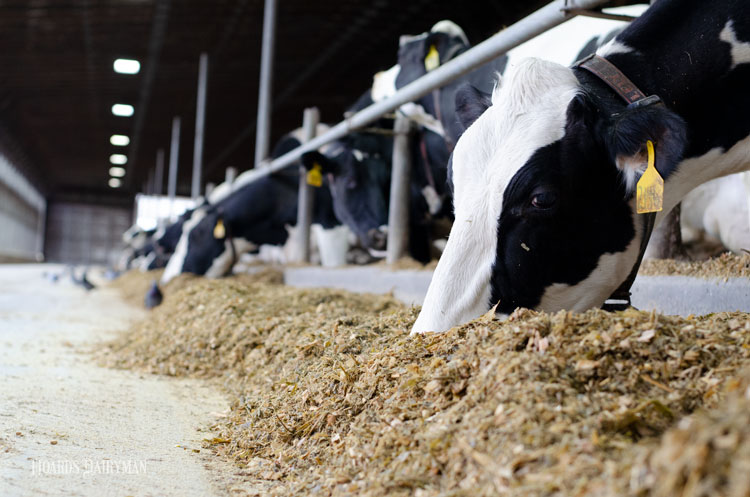
In December, dairy cattle sustainability will add a genetic tool with the introduction of the Council on Dairy Cattle Breeding’s (CDCB) Feed Saved trait in Holstein sire evaluations. At the CDCB industry meeting this month, panelists discussing the new trait were optimistic about using selection tools to help quantify and identify a more sustainable future — economically and environmentally.
Feed Saved will evaluate a cow’s actual feed intake compared its expected intake given body weight and milk production. As for the specifics of the trait, you’ll be able to read more in the November and December 2020 issues of Hoard’s Dairyman.
Selecting for more feed efficient cows will allow the industry to continue its growth in producing more milk with fewer resources. That means less land, water, energy, and money spent on growing and harvesting feedstuffs.
Being able to save money on feed is “not only a great aspect of sustainability from the profitability perspective, but it also means that less feed needs to be produced, which means that less crops are growing in the ground, and it means less emissions are happening on the cropping side of the operation,” said Juan Tricarico, the vice president of Sustainability Research at Dairy Management Inc.
Wisconsin dairy farmer Lloyd Holterman echoed those thoughts. Already a national award winner for his farm’s sustainability practices, Holterman described that their goal is to produce 1.7 pounds of energy-corrected milk for every 1 pound of dry matter the milking herd of 1,000 Holsteins consumes. The U.S. average is about 1.5 pounds of milk per pound of feed.
“We’re not all the way there yet, of course there’s a lot of work to do, but this new Feed Saved index is going to increase our sustainability,” he believes.
The idea of sustainability can get a bad rap as overused, but it doesn’t have to carry that connotation. The word should even be framed as just “stewardship,” said environmental expert Frank Mitloehner of University of California-Davis.
“I think that people in animal agriculture are way too focused on the term sustainability. Just replace it with stewardship. Would you have a ‘beef’ with stewardship?” he asked.
Sustainable stewardship does not have to be expensive, either. “I would say that most dairymen view sustainability as something that’s going to cost money and take effort,” said Holterman during a panel discussion in comments made on genetic tools to improve sustainability. “I would argue that sustainability is something that creates more profit. It’s a redirection of our thinking, and it’s a redirection of our genetic programs to select more for health. The building block of feed efficiency is going to be health.”








